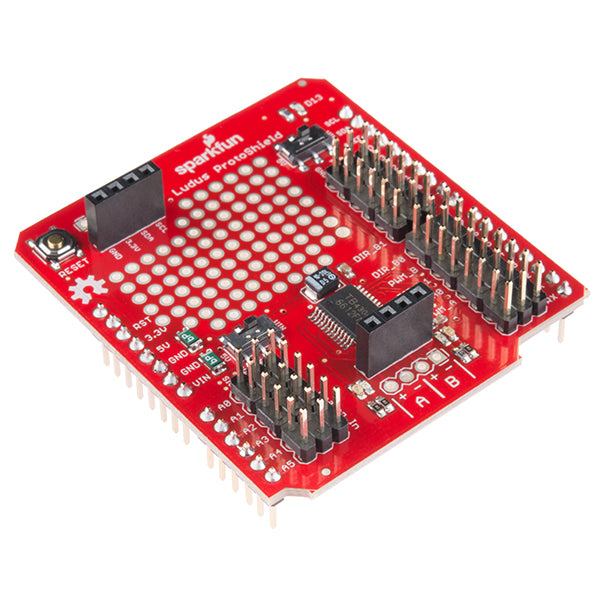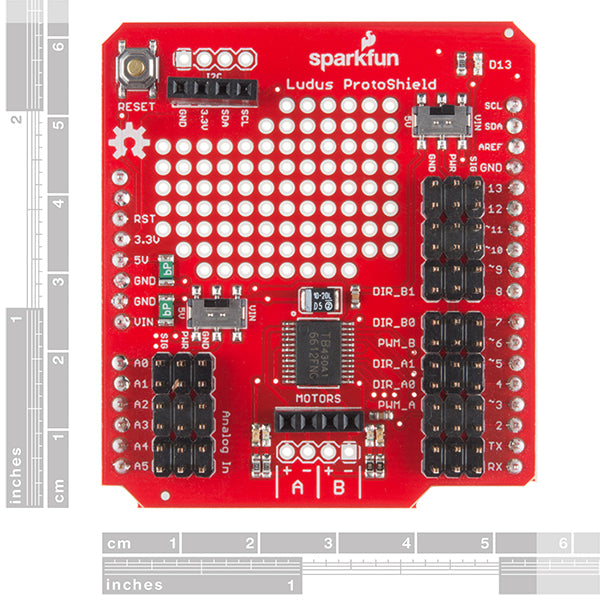
SparkFun Ludus Protoshield
Tutti i prezzi sono IVA inclusa
The SparkFun Ludus Protoshield is an Arduino compatible shield designed to make connecting motors and sensors to your Arduino-based development board as fast and easy as possible. Each Ludus shield has been equipped with a small prototyping area for quick integration of Arduino projects without the need of a separate breadboard. Simply assemble what you need in the prototyping area, attach this shield to your Arduino, and you will be up and running in no time. The SparkFun Ludus Protoshield was developed by our Education department to help teach any interested individual the dynamics of motor control through the Arduino IDE and was lovingly named after their very own mascot.
The heart of the Ludus ProtoShield is an H-Bridge Motor Driver. This allows the ProtoShield to drive two DC motors at once in both directions and brake electronically. The TB6612FNG H-Bridge Driver is rated up to 1.2A per channel at 13V which means it will drive a fair variety of hobby motors ranging in power. This Ludus board also features PWR and GND rails alongside the GPIO pins. Not only does this help you to avoid the common inconvenience of running out of GND and PWR pins, but because the pins are arranged with PWR in the center, plugging in servos is a snap! The PWR rail can even be switched between 5V (from the Arduino’s voltage regulator) and Vin using the on board slide switches. These features make the SparkFun Ludus Protoshield ideal for small rover-style robots.
This specific Ludus Protoshield includes an I2C header that has been laid out so that you can plug in a device such as a magnetometer or a 9DOF sensor. With these sensors it’s possible to set up a a nice a reliable navigation system.
Features:
- TB6612FNG H-Bridge Driver
- Prototyping Area
- I2C Header
- Arduino R3 Layout
Documents:
- Schematic
- Eagle Files
- Hookup Guide
- Datasheet (TB6612FNG)
- GitHub (Design Files & Example Code)

